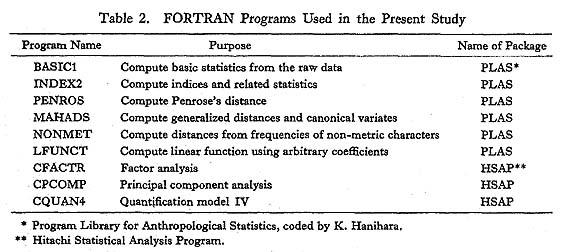3. METHODS OF INVESTIGATION
3.1. MeasurementsMeasurements of dental crowns were made by ordinary sliding calipers calibrated to 0.1 mm, and mesiodistal crown diameters were obtained from the right side teeth, no buccolingual diameters having been measured because accurate measurements were hardly possible on plaster casts from the living. No measurements were made if the tooth was heavily worn or badly damaged, so that the sample numbers were different from tooth to tooth in almost every population investigated. The measurements of the shovel-shaping of the incisors were made by a dial gauge with a pair of movable arms, and read to an accuracy of 0.05 mm (Hanihara et al.,1970). 3.2. ObservationsObservations of the non-metric crown characters were made on the right side teeth, the left side teeth having been observed only when the antimeres were in bad condition. The criteria for classifying each character were generally based on the P-series plaques provided by Dahlberg for the permanent dentition, and the D-series plaques by Hanihara (1961) for the deciduous dentition. However, their detailed descriptions will be given in the relevant chapter. 3.3. Statistical ComputationsSeveral statistical computations were processed by the HITAC-OS7 system of the University of Tokyo Computer Centre using FORTRAN programs coded by the present author and those contained in HSAP program package (Table 2). In addition, an electronic portable-type calculator was also used for calculation of relatively simple statistics.
|
